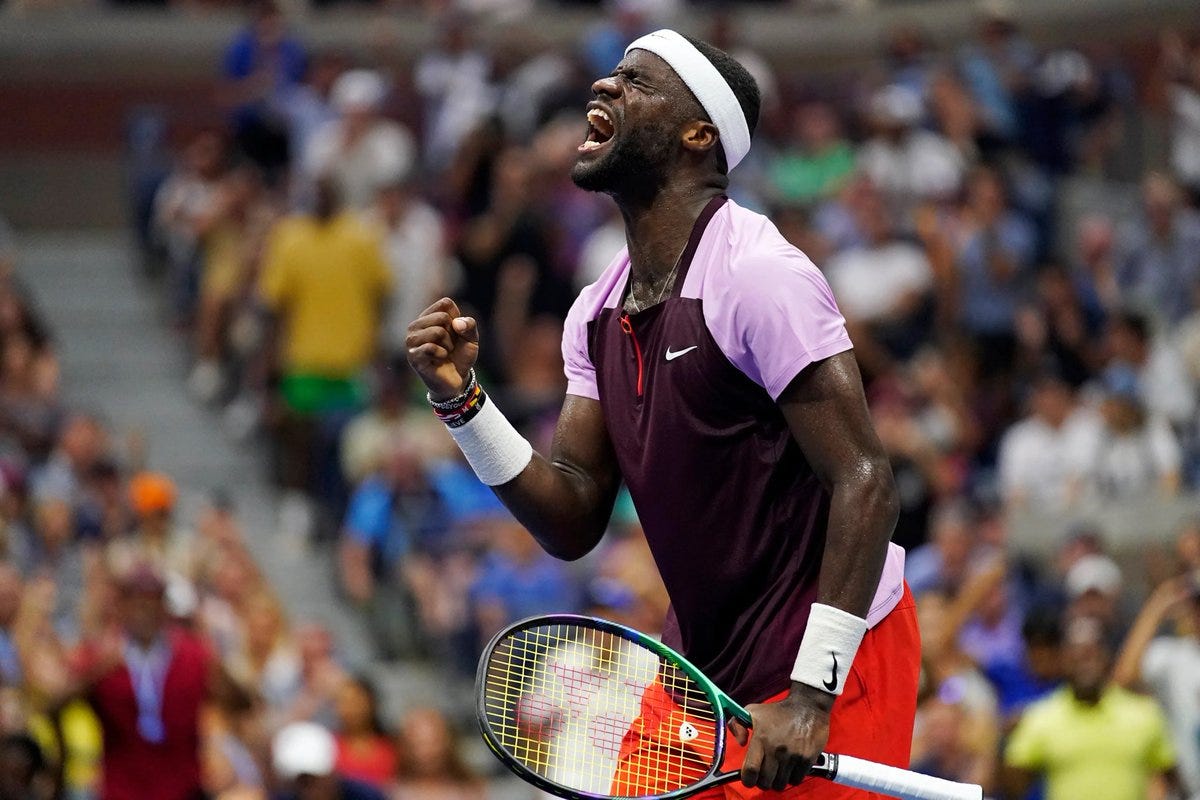The Tennis Pro Who Grew Up on the Court—Literally
Frances Tiafoe’s extraordinary journey to the top-10
While the other kids played in their tennis whites holding Wilson racquets like Federer or Babolats like Nadal, Frances Tiafoe watched from the bench just off the court. All of six years old, his feet couldn’t even touch the ground. But all day long he would watch, and when those lessons were finished, he’d find an empty corner of the court where he could mimic everything he had just seen: the footwork, the tosses, the groundstrokes. He would run all around those empty courts, even though his feet slipped out of the holes in his shoes.
After the other kids were—for real—whisked away in Rolls Royces, Tiafoe wouldn’t have to walk far to go home; he lived with his father and brother in the tennis center’s storage room. There were two massage tables used for beds; Tiafoe and his brother shared one of them. “It was a pretty small room,” Tiafoe said.
That is the extraordinary beginning to Frances Tiafoe’s improbable tennis story. This week, he became just the third Black American in history—joining Arthur Ashe and James Blake—to crack the world top 10.
“I’m a guy who shouldn’t even really be here doing half the things he’s doing,” Tiafoe said. “And now when you say [my] name, you can say, ‘He’s top 10 in the world.’”
It’s a journey that started in Sierra Leone, the West African nation that his parents escaped in 1991 during civil war. They wound up in the DC area, where Tiafoe’s father found work as a construction worker and later as a custodian at a tennis center. Tiafoe’s mother worked nights to make ends meet, so Tiafoe’s father converted the storage shed into a home away from home.
Soon, Tiafoe fell in love with the sport, and when a new coach named Visha Kouznetsov started at the tennis center, he noticed Tiafoe on his first day. He decided to help coach him. “He wasn’t any more talented than the other 8-year-olds who were there,” Kouznetsov told Andscape. “But when I came to work in the morning, he was there. When I left at night, he was there. I saw a kid who was always there, and a kid who I could teach as much tennis as I wanted to.”
On weekends, Kouznetsov would drive Tiafoe to far-flung tournaments, paying the entry fees himself. More often than not, Tiafoe would win. By the time he was 16, he was serving as a hitting partner for Rafael Nadal. He turned pro at 17 in 2014. And then, for the first time in his tennis life, Tiafoe started to lose. In every Grand Slam, he’d bow out in the early rounds—if he qualified at all. Before last year, having been on tour for eight grinding years, he’d only made the quarterfinals of a Slam once.
"The physical is a huge part of winning and playing at this level, but mental toughness, I believe, is really what gets you over the hump and helps you win big matches," Tiafoe said.
Luckily, mental strength is something Tiafoe knows well. This year, he’s winning titles, including the U.S. Men’s Clay Court Championships in Houston and last week’s BOSS Open in Stuttgart, Germany. He’s peaking at just the right time; Wimbledon starts in two weeks.
Every now and then, Tiafoe thinks about the other kids at that tennis center, the ones with the fancy clothes and racquets. “If I had the opportunity in life that they had, would I have wanted it that bad?” Tiafoe has asked himself. “Would I have gone to school? Would I think it was bigger than tennis? Would I care as much as I do now?”
He continues, “The life I led, even with all the struggles, was a blessing in disguise…This was meant to happen.”
Just how much further can he go?
One piece of housekeeping: I’ll be out next week, so there won’t be a new post. I’ll see you after the 4th of July! Have a great holiday.
🏀 Are you ready for our upcoming series Destination NBA: A G League Odyssey, premiering August 8 on Prime Video? In the film, we follow Scoot Henderson, the number 3 pick in this year’s draft. Watch a clip here.
⚽ The USWNT released their World Cup roster this week. If you need to smile (or maybe cry), watch this video of the players receiving the call that they’d made the team.
🏍️ I loved this New York Times photo essay about cabrage, described as “a rodeo on wheels,” in the Caribbean island of Martinique.
🧡 The Oxford American is one of the last great magazines in America—one of the few places that will run a gorgeous, original, pitch-perfect essay like this one by Jessica Wilkerson about her grandmother, Pat Summit, and what it means to be a Southern woman. “Sports,” Wilkerson wisely observes, “are not just about sports.”







